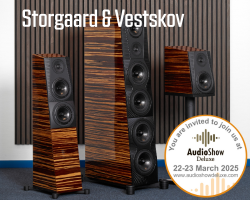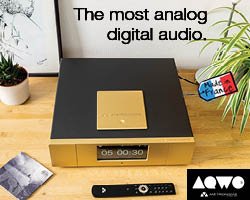CAMBRIDGE AUDIO CXA81ii AMPLIFIER AND CXN100 NETWORK PLAYER REVIEW
Cambridge Audio CXA81ii amplifier and CXN100 Network Player cost just shy of £1900 which is pretty low in the grand scheme of things these days for home audio. Janine Elliot takes a listen for HiFi PiG.

At the time of the two boxes from Cambridge Audio arriving for this review I was also going to be receiving a product from NAD for review, both including network servers. Two great “British” names from my past youth. Both have been producing some exceptional and historical products over the years, like the iconic NAD 3020 amplifier and Cambridge Audio’s beautifully looking 20W P40 amplifier, the very first ever amplifier to use a toroidal transformer (and in my opinion one of the best-looking amps of all time) plus the world’s first 2-box CD player in 1985 (the CD1). Both company’s products have advanced beyond recognition since their beginnings. Cambridge Audio were set up in 1968 in, yes, Cambridge, and like NAD has had an eventful history since then. Their Azur 640C CD player was my first “high-end” digital product, exceptionally well received by the press, not least for the very first good-looking heavy universal metal (fronted) remote control for a sub £1000 product. Up until then remotes were nearly all cheap Chinese plastic devices, and unfortunately the remote for their latest AX C35 CD player, plus the remote coming with the review amplifier, has gone back to plastic, though it looks “metallic”. At least 3 AAA batteries make it heavy(ish).
Set up by a group of young technology graduates in 1968 they wanted to produce HiFi that was well beyond what was available at the time, and with several landmarks over their 56 years of existence they have kept to that aim. Their ethos is “Made by Music” showing their love of music and making music enjoyment accessible to everyone. As a member of GBC (Good Business Charter), a founding donor of E/P (Earth Percent) co-founded by Brian Eno which is a charity to address the climate emergency, plus taking care of the earth’s resources in the way the company is run, this is a manufacturer with sound ethics. The units for review came with only card padding (no horrid plastic or foam here) and even the bags for the remote and paperwork was on biodegradable/compostable plastic.
Now owned by Audio Partnership PLC and London-based (with offices in UK, Germany, US and Hong Kong) the CEO is James Johnson-Flint. Their history reads like a book; originally part of Cambridge Audio Laboratories Ltd it was sold in 1971 to CE Hammond & CO Ltd, who distributed products such as Revox in the UK. in St. Ives, Cambridge. At one point it had over 300 staff with components made at the factory, or if not were made to CA’s specification (such as the transistors). Every product sold had its own printed certificate detailing the actual measured test results, such was their aim to make sure they met their own high target specs. Cambridge Audio then changed owners and names a few more times, being sold to Vince Adams in 1980 and changed to Cambridge Audio Research, then sold to Stan and Angie Curtis in 1984 and renamed Cambridge Audio International, then sold to HiFi Markets Group in 1988, to be sold two years later to the loudspeaker manufacturer Wharfedale in Leeds, and whilst this company was being reorganized by Stan Curtis still at the helm it was decided to separate the Cambridge company to its own establishment in 1994 and selling to the Audio Partnership, which had just been set up by the businessmen Julian Richer and James Johnson-Flint. Julian Richer (one of my childhood audio-icons) set up Richer Sounds, hence the massive relationship with their shops in the UK, helping to accelerate their sales. 30 years later the manufacturer is still known as Cambridge Audio, continuing the name’s association with computer, technological and audio developments from that great university town; names like ARCAM (the ‘CAM’ bit short for ‘Cambridge’), Acorn, ARM processors, Sir Clive Sinclair with his ZX80/81 and later computers, as well as the invention of the webcam, IVF, the thermos flask and the rules of football in 1848! The company is now solely owned by James. Proudly labelled as “Designed and Engineered in Great Britain”, they are made in China to save costs.
IN THE BOXES
The CX range fits neatly between the cheap AX and the more expensive EX series. With the CX range making its debut in 2015, the CXN100 and A81 Mk ii are recent editions, the former a new £899 updated streamer replacing the excellent and similar looking CXN (v2) launched in 2018, and the latter a fully featured integrated amplifier that has been around a little longer, replacing the Mk I. Where their DACmagic (I still have one – Ed) products over the years have given the company an enviable reputation, this new CX takes them firmly into the 21st century. With the excellent new ESS ES9028Q2M Sabre32 DAC and StreamMagic Gen4 module to run their latest StreamMagic app, it will stream just about everything including MQA. With Spotify Connect, Tidal Connect, Qubuz and Deezer built in, plus being Roon ready, this unit also includes regular coax, Toslink, USB and wireless digital internet sources using in-built Chromecast, Apple AirPlay2 and BT, meaning you can access Apple Music, Amazon Music and BBC Sounds, for example. It has balanced XLR and RCA analogue outputs and coaxial/Toslink digital outs. Internet radio is excellent with MPEG DASH support. My only quibble is that it doesn’t come included with a remote should you buy it on its own, but is designed to be used with the universal CX Series 2 remote that is supplied with their CSC CD transport and CSA81 amp, and can in any case be controlled via the company-designed StreamMagic app. This app has been around for many years and is very easy to use.
Everything is well laid out at the back of the CXN100, plus the front panel – with its 118mm (diagonal) colour screen – is in dark “urban” grey. The screen isn’t touch-sensitive but has 3 buttons on either side to press appropriately. They are also in a matching black camouflage to the display section so it makes it look like the screen would have to be touch-sensitive to operate. Clever! Firmware can be updated when necessary, using the StreamMagic app.


The matching A81 Mk II amplifier is an upgraded Mk I. With typical CA looks (but I wish they’d go back to a retro P40 style with its wooden side cheeks!), this amplifier has 80W of good-old class AB amplification into 8 ohms (interesting in a company that has also done class D and their “XD”) with a large toroidal transformer plus an ESS ES9018K2M SABRE32 DAC for your digital-to-analogue conversion of the single coax and two Toslink inputs, USB inputs plus Bluetooth aptX HD input, and Roon ready via USB. That power supply has two taps, so in effect it has one power supply for each channel, and all electronics have short signal paths. Where the ESS DAC in the CXN100 allows 32bit/768kHz and DSD512, the DAC in the A81 Mkii can unpack up to 24bit/284kHz and DSD64 sources.
Not a bad feature set for £999.
CAMBRIDGE AUDIO CXA81ii AMPLIFIER AND CXN100 NETWORK PLAYER BUILD AND FEATURES
Unboxing these two units was easily done and the units fit tightly and securely in them using just cardboard boxing and packaging, justifying their eco credentials. The units are of conventional European width and are only available in that gorgeous dark grey colour to match my Krell and Manley outfits. Whilst plastic, that remote does look good matching in shape to my old metal 640C remote, though I wished it was the same grey colour as the CX range. Both amp and network player look neat, but it’s just that. Nothing to go “wow” about, unlike their higher EX, Evo and Edge ranges.
Setting up was a doddle; both units are well laid out so that the mains and ins/outs match in their positioning so that I could use really short leads. Even the writing on the back for the connections is done upside down so that you can set it up at ease whether on your legs or standing on your head. Front layouts also match, so they will look great stacked up on top of each other. The “LCD” display on the amplifier is not as it seems, rather just a black plastic front with black buttons to press to select and highlight the LED illuminated inputs and speaker outputs. The A81MkII has two speaker selections, so you can either use speakers A, B or both. This is very handy if you want speakers elsewhere or a faux multi-speaker setup. The very large toroidal transformer on the amplifier is central and is clearly seen when looking through the vents at the top. Very pretty, and this also means lifting/carrying them is easy as the weight is central. There is only an off/on standby switch at the front (hurray, I hate switches at the back where you can’t easily get to them on a rack), but it does, however, mean you probably need to leave the system raring to go all the time in this power-eco world of today.
The CXN100 is equally well-designed front and back. The screen might not be touch-sensitive, but it doesn’t need to be with the clever onboard or mobile StreamMagic app. Having a well-stocked network player with XLR balanced analogue output is a great asset, and that A3 size easy-manual shows where to plug everything. With coax/Toslink ins and outs, Ethernet, service port, control bus, USB (with ground/lift switch), a general chassis ground/lift switch, plus two Wi-Fi/BT antennae, this is all easy to set up and use. The front screen shows album or source artwork/icon plus track title, artist, and album details on the right with detail of source, progress bar, and track time. Also, the clock and network connection are visible, plus it can display information such as speaker output and indicate if a firmware upgrade is available. The buttons on either side of the display operate relevant functions such as play, pause, skip, etc. Using the remote that comes with the A81 is also possible, as is the StreamMagic app, of course, to select Ethernet sources particularly.
SOUND QUALITY AND MORE FEATURES
I chose to do this review as a system rather than as separate components, as this would make an excellent package at the more accessible end of the HiFi spectrum, though there was nothing “low” in the sound or features here. Combined, the pair would cost two quid short of £1900, and adding the matching CXC CD player now that your music collection has come down from the loft, would make a brilliant ensemble. Just add speakers and cables, and maybe the Alva turntable to connect via BT. I’m sure Richer Sounds would help you out.
For a “British” product I chose “British” speakers. Most of my review used the Wilson Benesch Arc speakers with their speed and detail, mellow B&W 804 floor-standers, and my Graham LS5/9s. To cover varying price points I also tried them with my aged cheap Tannoy Mercury MX3 floorstanders. The amplifier also has a 3.5mm headphone socket on the front, so I could listen on cans as well.

Setting up the CXN100 was easy; firstly, download the app and connect via Ethernet cable and everything was set up within 10 minutes including other apps to run some of the functions. The StreamMagic Gen4 software is good to use, and looks quite simple.
Whilst the A81 amplifier doesn’t have a phono-stage it does have an output for your active subwoofer (playing up to around 2.3kHz). There are 4 digital source selections plus 4 analogue inputs; including XLR or RCA on input 1 when you toggle the associated button. Two hidden LEDs might light up on the front; one is a protection indicator and the other a flashing mute light so you know when you need to hear your partner. At the rear, the unit is well and clearly laid out. An RS232C serial port for serial data communication, plus control bus RCA sockets to share power and volume commands with other CX products, such as the CXN100. The in/out 3.5mm triggers on the back allow the amp or network player to control the other via a 12V pulse. Other features include 3.5mm IR socket, pre-out RCA connections if you want to use this unit just as a preamp, plus a USB B-type connector to connect to your laptop for playback of music (WIN, OS X and some builds of Linux) and there is a ground/lift switch to reduce electronic hum if appropriate. Of course, this and the CXN100 have Bluetooth antennae, both small aerials so you won’t even see them. The simple set-up manual is good to get you started but to save paper there is a QR code link to their website for far more details on the CX and StreamMagic products.

So to the listening. First of all, I chose BT from my Astell and Kern SE180 and my mobile phone to test out FLAC, WAV, MP3, MQA and DSD music. Initially, I played “Nothing’s Going to Stop Us” from Starship. I haven’t played this for years, but the tight digital drum opening, excellent top-end and clear vocals made this highly enjoyable, particularly on the WB speakers. Eagle’s “Take it Easy” 2003 re-master of the 1972 album certainly lived up to its name; this was a very gentle track without too much excitement, but showing that the warmth and musicality from the digital circuitry gave a hugely human sound. The ESS chip and its friends work well together, just like I felt the then excellent Wolfson chip in my 640C made all the difference to that CD player all those years ago.
Time to turn to something with lots of highs, lows and a plethora of instruments, namely my Alan Parsons Project ‘The Turn of a Friendly Card’ album (1980), one of my favourites from my late youth. APL was set up in London in 1975. Alan was a producer, audio engineer, musician and composer, and working with Eric Woolfson (there’s almost a link there to the 640C!) set up the project, making some “Bee Gees”- type harmonisations and great use of modern and old instrumentation all ideal for music reviewing from this DSD version. Interestingly Alan Parsons first met Eric in the canteen at Abbey Road Studios, where he was assistant engineer for the Beatles “Abbey Road” and “Let It Be” albums, but it is engineering of Pink Floyd’s “Dark Side of the Moon” that introduced me to him. This album sounds so clear and musical across all the speakers via the server/amplifier combination – though all speakers sounded somewhat different, as you would expect. Alan’s distinctive vocal lisp comes across as completely human and adds to the magic of the performance. It doesn’t make the vocals sound edgy or digital, showing how well-crafted this £900 server is. Eric also made some solo concept albums himself, including the narration from the great Orson Wells, which leads me appropriately to another major concept album from the past; Jeff Wayne’s ‘War of the Worlds’ based on the H.G. Wells story. Jeff – also a producer, musician and composer – has this time asked Richard Burton to do the narration for this unique pop-opera. This is another great album if you want to hear good old synths and unusual use of acoustic instruments, plus good quality spoken word (essential listening for the BBC loudspeaker designers of the past, and hopefully most speaker designers today). There is excellent engineering from Jeff apart from that awful ADT (this time not Automatic Double Tracking!) from Justin Hayward in the beautiful “Forever Autumn”; particularly the first verse of this 1978 released epic. With excellent bass drum beats and 70’s Moog 3C, Arp Odyssey and Yamaha CS-80 synthesisers, plus real string orchestra of around 50 musicians recorded separately at Abbey Road, this makes great listening, if you don’t mind the continual repeats of themes (Leitmotifs). Of course, Wagner did that very successfully in his operas (“Musikdramas” as he called them). In this two-CD recording played on my Krell, the ability to get involved in the music from the Cambridge was quite spectacular. Not just detail and bite, but also excellent musicality and emotion was really evident in all I played. Including jangle piano (metal on the tips of the hammers), mandolin, zither, tar and santoor, this is quite an educational album as well as being crispy sharp and quick but still almost flat across all frequencies making for a good advert for the CX range. The aggression in the music is evident particularly in the synths and guitars, contrasting with a very natural, human and organic sound from the orchestral instrumentation. The CX copes well with them both. The sugary strings in “Forever Autumn” fits beautifully with the acoustic guitar and mandolin. All have their own position clearly in the soundstage. The Yamaha C80 includes its ribbon controller which is clearly heard as a central part of this great work, giving a juicy phased sound. The synths, bass, drum, spoken word (also including David Essex) and effects such as spaceships all add up to a plethora of soundscapes brilliantly performed by what is essentially an entry-level audiophile system, but without entry-level sound quality and facilities.
Finally to classics, firstly The Queen Symphony (Tolga Kashif) with some excellent open soundstage and detail in the bass, and then to my regular tipple of Tartini’s Violin Concerto in A D56 (‘Vivaldi in Venice’ – Chasing the Dragon) with its very accurate performance particularly in mids and highs, this CXA81ii could play just about anything. The Tartini had plenty of power when needed plus the beauty and emotion from the musicians in this live recording made for great listening. This class AB toroidal powered amp certainly is a meaty and musical performer for the price. Even occasional vibration noises (accidental effects of a live performance in a hall) were clearly audible and positioned precisely to the right of the stage, making the recording even more realistic and appealing.
Listening also on headphones gave a very good account of the music. Pink Floyd’s “Comfortably Numb” was comfortably mellow on loudspeakers and just a little brighter on the AT 1000X and Meze 99 classic headphones, and certainly more tizzy with digi-sources such as Spotify. But, as an “extra” facility the headphone output was certainly not an afterthought. The last track that I played was Led Zeppellin’s “Stairway to Heaven”, setting me ready to take to the stairway for bedtime. What a lovely way to relive my 20th century youth with the 21st century Cambridge Audio.
CONCLUSION
This was certainly a notably good duo of products for the price. I couldn’t really find any major faults in any areas. A very refined performance for the price, the A81 MkII just lacks some of the magic that I have heard with some more expensive amplifiers, and the CXN100 is a magical network server that would be welcome in anyone’s HiFi setup. For just under £1900 for the pair, this makes an easy choice for the newbie audiophile or anyone who wants almost everything but doesn’t want to pay lots for it.
I am awarding the Cambridge Audio amplifier and network server 5 stars due to the onboard facilities in both and musicality at such good prices. The N100 is a particularly excellent!
AT A GLANCE
Build Quality:
Well-constructed, very tidy, but I’m not sure about the feet
Sound Quality:
Excellent and flat across all frequencies, with tight bass end and excellent speed
The CXN100 has excellent musical clarity on all sources and XLR balanced out
Value For Money:
At £2 short of £1900 this is excellent value for Class AB toroidal powered amplifier and full facility network server.
We Loved:
CXN100:
Excellent facilities and good screen size and layout
Very accurate and musical translation of digital sources
Great to use!
Using StreamMagic Gen4 software was easy
CXA81 Mk II:
Worked well on all types of music
Dynamic and controlled
Massive and visible toroidal transformer!
We Didn’t Love So Much:
The dark “urban grey” front might not match well with your black or light grey components, but I do like it! I guess you’ll need to buy a complete Cambridge system, then!
Not sure about having two feet at the back and just a long rubber-lined lower elevation of the chassis at the front (an idea appearing on other ranges as well).
Elevator Pitch Review: I have been following Cambridge Audio for decades, and have bought the odd CD, DAB and amplifier during this time. Their Edge range has certainly got my attention over the past few years as well as their streamers and network players. So, to get the chance to hear their lower-priced CX range was something I had to do! They might not look quite as good as their Evo and Edge range, but they are crammed with technology gained from 56 years of experience. The CXN100 is a blaster of a network player and betters their previous CXN v2, and the A81 Mk II integrates both Digital and analogue inputs with aplomb for £999. How well they worked together made me smile. A lot.
Price:
CXN100 £899
Janine Elliot
System used:
Astell and Kern SE180, Lenovo laptop, Samsung A23, Ethernet (DSD, Qobuz, WAV, FLAC, MQA, MP3 Digital sources); Pre-Audio GL-1102N/Ortofon Kontrapunkt b (turntable/cartridge) plus Manley Steelhead (phono-stage); Krell KPS20i (CD); Wilson Benesch Arc, Graham LS5/9, B&W804, Tannoy Mercury MX3 (speakers); Tellurium Ultra Silver 2 and Townshend F1 and Isolda cables, Coppice Audio stand and Townshend rack.
SUPPLIED SPECIFICATIONS
CXN100 specification
DAC; ESS ES9028Q2M
USB AUDIO INPUT; USB Type B conforms to USB Audio 2.0
DIGITAL AUDIO INPUTS; USB Drive, Bluetooth (5.1), S/PDIF Coaxial, TOSLINK Optical
ANALOGUE AUDIO OUTPUTS; Balanced XLR and unbalanced RCA analogue
DIGITAL AUDIO OUTPUTS; S/PDIF Coaxial and TOSLINK Optical
COMPATIBILITY; TOSLINK optical: 16/24bit 32-96kHz PCM, DoP64 S/PDIF coaxial: 16/24bit 32-192kHz PCM, DoP64 UPnP: up to 32bit, 768kHz Local USB media: PCM up to 32-bit 768kHz, DSD up to x512 USB audio: PCM up to 32-bit 768kHz, DSD up to x512 Bluetooth: SBC, AAC AirPlay 2, Chromecast built-in, Internet Radio, Spotify Connect, TIDAL Connect, MQA, Qobuz, Deezer, Roon Ready.
AUDIO FORMATS; ALAC, WAV, FLAC, AIFF, DSD (x512), WMA, MP3, AAC, HE AAC, AAC+, OGG Vorbis
ETHERNET; 10/100MbitWI-FIIEEE 802.11 ac (2.4GHz / 5GHz)
MAX POWER CONSUMPTION; 30W
STANDBY POWER CONSUMPTION; <0.5W (eco), <2W (network standby)
DIMENSIONS; 430 x 85 x 305mm (16.9 x 3.4 x 12.2″)
WEIGHT; 3.55Kg (7.83lbs)
BOX CONTENT; CXN100, mains lead, control bus cable, antenna x2, quick start guide, safety sheet, registration card
Specification A81 Mk II
Power Output; 80W RMS into 8 Ohms, 120W into 4 Ohms
DAC; ESS Sabre ES9018K2M
FREQUENCY RESPONSE <5Hz-60kHz +/- 1dB
ANALOGUE INPUTS; 1 x balanced, 4 x RCA
COMPATIBILITY; OSLINK optical: 16/24bit 32-96kHz PCM only, S/PDIF coaxial: 16/24bit 32-192kHz PCM only, USB: audio profile 1.0/2.0 (default 2.0), up to 24-bit 384kHz PCM, up to DSD256 or DoP256, Bluetooth: 4.2 A2DP/AVRCP supporting up to aptX HD (24bit 48kHz)
BLUETOOTH APTX HD RECEIVER BUILT IN; Yes
ROON TESTED; Yes
REMOTE CONTROL; Yes
MAX POWER CONSUMPTION; 750W
STANDBY POWER: <0.5W
DIMENSIONS; 115 x 430 x 341mm (4.5 x 16.9 x 13.4”)
WEIGHT; 8.7kg (19.1lbs)







































































































































































































